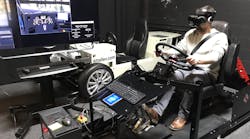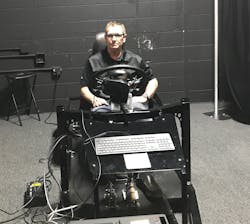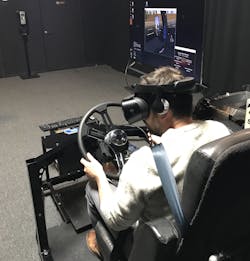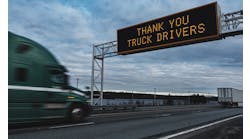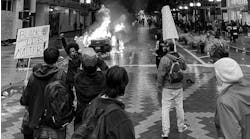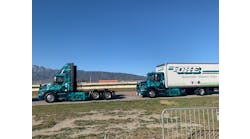Dominic Dobson knows a thing or two about driving, with an auto racing resume that includes seven starts in the Indianapolis 500.
After retiring as a full-time racer, Dobson founded an augmented reality company in Seattle, but still sought out driving challenges, such as the famous Pike Peak International Hill Climb.
Leading up to that race in 2015, Dobson came into contact with Keith Maher, who had spent more than two decades in Intel’s research and development group.
Maher offered to develop a virtual reality simulator for Dobson, allowing him to practice the 156 turns over the 12.42-mile course. This provided Dobson not only a training advantage, and but an eye-opening experience, when a bad turn sent his virtual car off the road.
“I reacted just as I would have in a real car,” Dobson said. “It is way more similar to driving an actual vehicle than anything that’s become before it.”
Dobson went on to win the race in his first attempt – and then in August 2016 launched VRMotion with Maher to take virtual reality to a wider audience.
I first encountered VRMotion at the CES show in January, where it featured a virtual reality simulator of a law enforcement driving test tucked away in one corner of Intel’s massive exhibit booth.
Though I did not score well, I left impressed. Once I put on the VR goggles, I sensed myself turning my head to look over my shoulders, as if I was actually in a vehicle. It immediately felt more real than any other simulator I had ever tried.
Dobson said entering “a world that somebody else created” teaches the brain “in a different way” than looking at screens, or listening to a lecture.
Last week, Dobson invited me to VRMotion’s office in Hillsboro, OR, strategically located near one of Intel’s campuses outside of Portland.
Dobson said targeting commercial fleets had always been part of the business plan, but it was accelerated after fleets began contacting him last year. Several fleets are working involved in beta testing, and in recent weeks VRMotion had conducted demonstrations in Denver, Salt Lake City, Washington DC, Virginia, and Ohio.
During my visit, I tried out a VR simulator specifically for truckers. I “drove” a Kenworth truck that is part of a system that a fleet plans to test out.
While the resolution needs additional improvements so the dashboard data is more easily visible, the time behind the goggles once again left me believing it won’t be too long before virtual reality training becomes commonplace.
During the simulation, I exited a truck stop and drove on an interstate for several miles before exiting. It was at that point day quickly turned to night – an example of the customization VRMotion is working to provide fleets. You can hear the engine noise and feel the seat vibration – further examples of how virtual reality recreates the feel of being on a real highway.
Dobson said he believes VR simulators can be particularly valuable in giving prospective drivers a first tasting of driving a truck, without the risks of being on the highway. Likewise, in time, this can include specific training situations, such as high winds, snowy roads, and tire blowouts – whether developed by VRMotion or a third-party vendor.
One of the potential drawbacks of earlier generations of virtual reality is that it can make people nauseous. There are scientific reasons why that happens, but Dobson said major strides have been made to make it a smoother experience.
Still, for those who may still feel discomfort, Dobson showed me a small device that straps to the head and provides gentle vibration that usually helps eliminate any issues.
Dobson also said virtual reality can help the transition to a world where autonomous driving begins to blend with humans. He said people can test out technologies such as adaptive cruise control and lane-keeping assist in the safe environment of a simulator – rather than out on the highway.
